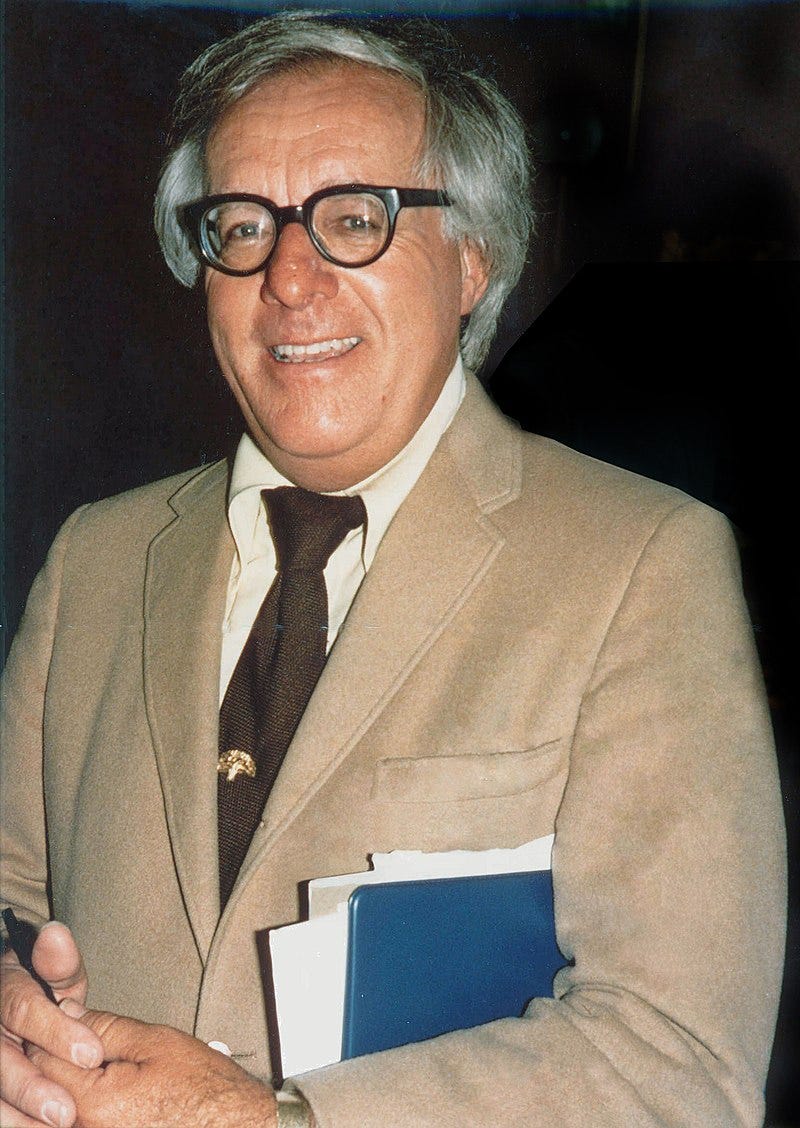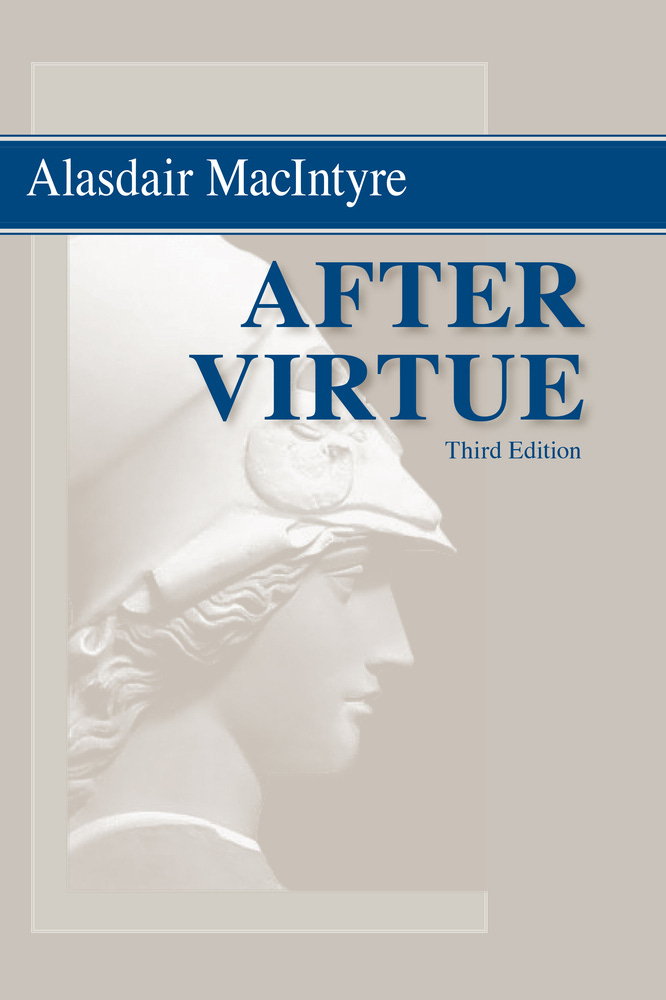I recommend reading the first part of this essay before proceeding.
Imagining Morality with Ray Bradbury, Part 1
One of the writers who came into his own during the era that speculative fiction was making its mark was Ray Bradbury. Bradbury explored numerous worlds in his writing, but the world of Fahrenheit 451 stands out. It is worth noting that the moral action of Guy Montag does not begin in his own story, but rather starts in a short story written previously.…
Montag’s encounter with the Bible, easily one of the most famous instances of prescribing right action in written form, serves as the catalyst for all his subsequent understandings of “right.” It is not until he begins reading Matthew 6 on the train to Faber’s house that he commits to a course of action that breaks from the standard norm, and thus begins to interject his rival tradition over against that of everyone he knows.1 As a result, Montag becomes the moral agent, possessing the “capacity to judge and to do the right thing in the right place at the right time in the right way.”2 The execution of Beatty suggest a more vigilante justice than what one would otherwise consider, but two things should mitigate such a judgment. First, Beatty is a murderer in his own right, having taken part in the burning of the woman from whom Montag acquired his Bible. Second, the portion of the Bible that Montag had committed to memory was Ecclesiastes 3. As he reflects upon this at the close of the book, he recalls verse 7, and then asks, “But what else. What else?”3 The answer comes from Revelation 22:2. But the rest the passage which Montag is looking for is equally pertinent: “A time to love, and a time to hate; a time of war, and a time of peace.”4 While this would not end the novel on a note of hope, as the Revelation reference does, it speaks to an understanding of right and wrong that Montag has imbibed from the Bible as he has committed some of it to memory. The Sermon on the Mount, Ecclesiastes, and Revelation each provide a view of ethics and morality which informs the Christian tradition, and there can be no doubt that Beatty stands in opposition of this rival claim.
Montag’s right action is contagious as well, as Faber changes along with his new friend. Faber is already a member of a competing tradition of people who know the value of the past but choose to hide from their cultural oppressors. Faber has even encountered the Bible before, but unlike Montag, he did not convert to a tradition of ethical action. Knowledge of the right is not enough to prompt Faber to do something about it, making him in his own way a contrast with Montag. When the former fireman comes to visit him after the death of Beatty, Montag apologizes to Faber for getting him involved. Faber’s response encapsulates the way in which a tradition might conflict, and even overtake another: “You did what you had to do. It was coming on for a long time . . . I feel alive for the first time in years . . . I feel I’m doing what I should’ve done a lifetime ago. For a little while I’m not afraid. Maybe it’s because I’m doing the right thing at last.”5 Reclaiming the virtues of the past involves an intentional repudiation of the individualism and political structures of the modern era, and Faber is only able to come into this realization once he and Montag become a unit; it is through their working together that both realize the power of a virtuous friend.6

These are not the only ways in which the world of Fahrenheit 451 proves the value of MacIntyre’s theory. But it serves as a good beginning to understanding how speculative fiction might assist such a philosophical project, especially without beginning from a Christian foundation.7 In this frame, one can see the working out of Bradbury’s own thoughts regarding the origins of stories: “at heart, all good stories are the one kind of story, the story written by an individual man from his individual truth.”8 Each piece of speculative fiction, then, does not speak for all mankind at all times. They are documents for the occasion, and they are written from a perspective, resembling a photograph in this way. The angle, the color, the light, all the elements coming together in a single moment that is not likely to be repeated but may continue to speak long after the moment is past. This idea bridges the gap between MacIntyre’s occasional skepticism of the fictional with the power that it conveys. Just as “to live well is to act so as to move toward achieving the best goods of which one is capable and so as to become the kind of agent capable of achieving those goods,” so Montag only becomes the person Bradbury intends him to be when me is finally floating down the river, free and baptized into a whole new way of life.9 Likewise, readers are baptized into a new tradition, or rather an old one, when they go with Montag all the way to the very end, with the tree of life on both sides of the river.10
If you liked this line of thinking, I also suggest checking out my essay, “Imagining Morality: Alasdair Macintyre’s Virtue Theory & Neil Gaiman’s American Gods,” published by the good folks over at An Unexpected Journal.
Bradbury, Fahrenheit 451, 74-76.
MacIntyre, After Virtue, 151.
Bradbury, Fahrenheit 451, 158.
Ecc. 3:8, KJV
Bradbury, Fahrenheit 451, 125.
MacIntyre, After Virtue, 255.
It is not evident in the text that Montag is a religious man prior to reading his precious Bible. If Bradbury sought to give the book a Christian worldview (which seems unlikely), his later letters and editorials would suggest that many Christian groups had thought he failed. For an example, see Ray Bradbury, “Coda,” in Fahrenheit 451, 60th Anniversary (New York: Simon & Schuster, 2013), 208-212.
Ray Bradbury, Zen in the Art of Writing: Essays on Creativity (Santa Barbara, CA: Joshua Odell Editions, 1994), 149.
Bradbury, Fahrenheit 451, 133-134.
Bradbury, Fahrenheit 451, 158.






